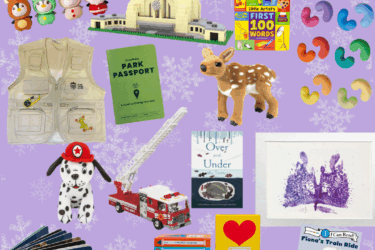Understanding Dyslexia
It’s natural for your kid to struggle when learning to read, but what about when they’re still learning the alphabet after the other kids have moved on? “In first grade, I didn’t know all my letters, and everyone else was on sight words, and that’s when we started to realize something was wrong,” Gigi Casadaban, a friend with dyslexia, recalls. Hearing the diagnosis “dyslexia” might feel scary or intimidating as a parent, but you’re not alone: Dyslexia is actually pretty common—it affects 20 percent of the population and represents 80–90 percent of all those with learning disabilities. Moreover, early support can make a huge difference.
DYSLEXIA DEFINED
The International Dyslexia Association (IDA) defines dyslexia as “a specific learning disability that is neurobiological in origin. It is characterized by difficulties with accurate and/or fluent word recognition and by poor spelling and decoding abilities.” In essence, your brain jumbles letters, words, and even the command from your parents to go clean your room, like a camera going in and out of focus. “Most people think it’s just a reading or spelling thing,” Casadaban explains. “Mainly, it’s a short-term memory problem. There’s really no such thing as memorizing something ‘for the test.’ I really do have to learn it.”
The IDA explains that though the exact cause of dyslexia is still unclear, it affects the way the brain functions and develops, leading to unexpected deficits in cognitive abilities, reading comprehension, and a “reduced reading experience that can impede growth of vocabulary and background knowledge.” It’s not about a child’s vision or level of intelligence. The Yale Center for Dyslexia & Creativity claims it is “most commonly due to a difficulty in phonological processing (the appreciation of the individual sounds of spoken language), which affects the ability of an individual to speak, read, spell and often, learn a second language.”
DYSLEXIA DIAGNOSED
Dyslexia is typically diagnosed by a comprehensive exam, which involves “intellectual and academic achievement testing, as well as an assessment of the critical underlying language skills that are closely linked to dyslexia,” according to the IDA. The testing is more than checking your child’s current reading level: It covers literary challenges like phonological awareness, decoding, reading fluency and comprehension, and rapid naming to evaluate your child’s cognitive and language processes.
If you believe your child might have dyslexia, begin by talking to their teacher or pediatrician. Signs to watch for include:
- Difficulty learning letters and sounds
- Trouble rhyming or remembering sequences
- Slow, effortful reading
- Avoidance of reading aloud
- Poor spelling despite strong verbal skills
If they attend public school, you can also request a free school evaluation under IDEA. Often, if a student fails a dyslexia screening test, they will be referred to the school-based problem-solving team, who will review the student’s data and develop an IEP (Individualized Education Program) plan for the student. The Student Action Plan can include dyslexia specific interventions, accommodations like extra time on tests and/or assistive technology to assist the student in accessing content materials. Private testing is also an option, available for a cost.
DYSLEXIA SUPPORT TEAM
“My parents were so supportive and never made me feel embarrassed,” Casadaban shares. “They were a real blessing in that they never hid it or acted like we shouldn’t tell people about my dyslexia.” Her advice to parents with a child with dyslexia is to embrace it and support your child—don’t be embarrassed by their dyslexia, because it will lead your kid to be embarrassed by it too. “I know it’s scary to find out something’s wrong with your kid and that you want them to do so well, but they’re going to be fine,” she assures parents. “School’s gonna be tough, but you know, that’s just sort of how it’s going to be, and your kid can do all the things you can do; It might just take them more time to do it. Ultimately they’re going to be great people with all kinds of opportunities for jobs and careers, especially with your help.”
While it may feel hard to receive a diagnosis, consider how freeing it might be for your child. “Before we knew I had dyslexia, it was hard and frustrating for my parents and for me because I couldn’t get it together,” Casadaban says. “After, there was more of a plan, and my school really focused on getting stuff into my long-term memory.” Understanding the problem is the key to figuring out how to take steps to fix it! Try incorporating read-aloud time (even for older kids), using audiobooks and assistive tech (like speech-to-text) and praising your child’s effort, not just their achievements.
DYSLEXIA TIMELINE
There is no “cure” for dyslexia—it’s a lifelong journey. However, early intervention can be instrumental in helping your child learn. “Early intervention or additional direct instruction should begin as early as kindergarten or first grade for struggling readers when the gap is small and students benefit from brain plasticity advantages for learning language-based information,” the IDA recommends. When you first notice your child’s struggles, be proactive in advocating for them to get the resources they need.
DYSLEXIA REFRAMED
Although there are certainly challenges that your child will face because of dyslexia, there are also advantages. “When I was little, I just wanted it to go away,” Casadaban remembers. “But now, even on the days I’m more aware of my dyslexia, I wouldn’t change that about myself.”
Casadaban’s parents would tell her growing up that it would both hurt and help her brain to have dyslexia—and now she finally understands what they meant. “It’s made me smarter. Academically, I can solve problems faster, I can make decisions based on less information and I’m more creative, coming up with new ways to do things. I can teach others really well and explain how to do things better because I had to teach myself my entire life.” Other benefits to dyslexia include developing more patience for others and yourself, as well as increased compassion, sympathy and awareness toward others. “It makes me more aware of others in friendships because I know what it’s like to have something invisible that’s wrong with me,” Casadaban says. “There are days I wish I didn’t have dyslexia, but some days when I problem-solve, I know it’s because I grew up doing that.” Encourage your child to see the ways their dyslexia will grow them into a better person over time.
DYSLEXIA TECH TIP
Technology is a person with dyslexia’s best friend. For example, “Textbooks read to me, which can be really helpful,” Casadaban states. “Spellcheck is awesome, especially because it would take a lot of time when I was young.” You can also set reminders and to-do lists on your phone to help with their short-term memory struggles. Programs like Grammarly can also read everything your child types and highlight potential mistakes, which can help them to better process information. Speech-to-text typing and texting can also be a helpful tool. Plus, many e-readers like Kindles have a dyslexic font that is easier to read.
DYSLEXIA RESOURCES
There is a world of dyslexia-related resources available to you and your child at the click of a button, both locally and nationally. To learn more about what dyslexia is, check out International Dyslexia Association (IDA), Understood.org, Decoding Dyslexia, and Dr. Sally Shaywitz’s book Overcoming Dyslexia. Consider enrolling your child in a dyslexia school, tutoring, programs focused on structured literacy like Orton-Gillingham or a curriculum like Barton or Wilson for targeted intervention.
Remember, dyslexia may pose some difficulties, but it will grow your child in unique ways; with the right support and understanding, your child will thrive! And to your child with dyslexia, Casadaban says, “I’m so sorry school is so different for you, but even if you don’t realize it, this is turning you into a more understanding person. One day you’ll find out something you’re great at and it will be so much better.”





